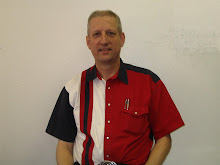When you mention a GPS these days most people picture a small LCD screen in their car with a voice that tells them where to turn on the way to their desired destination. Most of these have been given a name by their owners, mine is Gypsy Rosalie, with a play on GPS and a Twilight influence. We opted for the personality with a British female accent.
Our GPS does not have as much personality as my sister’s does. Over in Ireland they use their navigational aid extensively, but one time kept making detours contrary to the directions to see the sights. Finally their GPS said, “I’m afraid you are going to have to work with me a bit, dearie.”
It’s amazing how much we use the GPS just around town when we know exactly where we’re going. I think it’s a Star Trek thing in that we like our computers to talk to us as if they are really as smart as we wish. My laptop has a feminine voice as well to this end. It’s very comforting as I shut it down when it talks to me.
Many people have forgotten the original, yet more portable GPS receivers used by people out of doors, usually hunters or hikers. A small handheld GPS receiver can guide you to your favorite camping, hiking or fishing spot to within about 5 feet. There’s a new low end features unit that will help you find your way back to your car in a parking lot. For its price, though, you can rather buy the real deal. I own a Garmin Legend. The Etrex is a little cheaper for those on a more limited budget.
In addition to find places, there are a number of other things you can do with a good GPS. My brother-in-law likes a game called “Fox and Hound” played with multiple GPS units, multiple vehicles and radios. The idea is for the fox to leave first then call period coordinates as he travels. The hound then tries to catch up or anticipate where the fox will go and catch the fox. The fox must take regular stops to allow the capture.
Another entertaining thing to do is geocaching. Someone hides a container, usually. This may also be a virtual cache where you find a spot, but no physical cache. Normally, though, someone hides a container. The container can be literally any size. The smallest I’ve seen was the size of my fingernail. Larger containers are usually something like Tupperware or an ammo box. Inside the box are a log book and goodies. These goodies are usually just trinkets with no real monetary value.
This cache is hidden somewhere...anywhere. The coordinates and description are posted online. My favorite website is www.geocaching.com. You look for a cache near you, enter the coordinates into your GPS, then take off. The GPS will tell you what direction to travel and how far away it is. When you get within 5-30 feet depending on the accuracy of your GPS and the one who hid the cache, you start looking for hiding places under rocks, in pipes, in hollows of trees or magnetic containers stuck to signs or structures.
Once you locate the container you log your visit and trade a trinket from your pocket for one in the cache. Some trinkets are called travel bugs and you log where you pick it up and where you later drop it off so that people can track its progress. When you return home from your trek you go online again to www.geocaching.com and log that you found the hidden container and what items you traded.
It’s amazing to think that you can find an object hidden anywhere in the world as small as your fingernail with the aid of a GPS and a great deal of satisfaction comes from doing it. Some caches incorporate riddles or puzzles to solve the location. There is a much larger group doing this than you might think. Some people I have known like to do it at night to make it more challenging. Others locate the hidden cache using topographical maps and compasses. That requires more skill and patience than I have, plus I love gadgets.
Imagination in the hiding leads to pleasure in the finding, kind of like most everything enjoyable in life.
Happy trails,
Twist



No comments:
Post a Comment